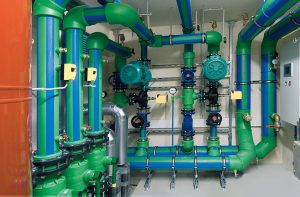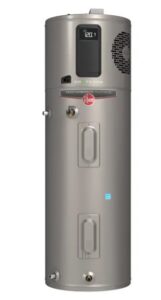The 2006 International Building Code requires drinking fountains in all occupancies except dwelling units and and sleeping units. This section of the code has frequently been overlooked. However building departments have begun enforcing the requirement with some regularity.
Generally you are allowed to tie your drinking fountain into a kitchen sink but it cannot be part of a service sink. I have seen kitchen sinks without drinking fountains pass but this isn’t spelled out in the IBC. In fact, even restaurants are required to have drinking fountains.
In occupancies where drinking fountains are required the required number is generally 1 per 100 occupants. There are a few exceptions. Visitors in institutional settings need 1 per 500. Mercantile and storage occupancies require 1 per 1,000. Factories require 1 per 400.
The image is from the ADA guidelines and shows required dimensions for accessible water fountains.












4 thoughts on “Drinking Fountains – The Plumbing Fixture That May Be Overlooked”
Another wonderful conflict between the plumbing code and the building code. The ICC has quite a few of these.
not to come in and rain on the parade, but IPC – section 410.1 actually states the following “Where water is served in restaurants, drinking fountains shall not be required”. This goes back to at least the 2006 code.
I believe the requirements for public drinking fountains needs to reviewed immediately. The present requirements to provide drinking fountains in all establishments hightens the risk of transmitted desease. The alternative to drinking fountains is to install water coolers which do not have bubblers and require individuals to use a disposable cup which helps prevent transmitted desease by contact. These water coolers also reduce the amount of pure water being induced into the sewer system and therefore save money in chemicals, labor and electricity. I believe sooner than later there will be a major epidemic whcih will stem from public use of drinking fountains.
All true and I feel the upkeep and maintenance of most drinking fountains and water coolers is also overlooked. I wish more local and township budgets would start focusing on public watering holes and the health issues involved with public sharing of these units. Keeping them clean etc.
Comments are closed.